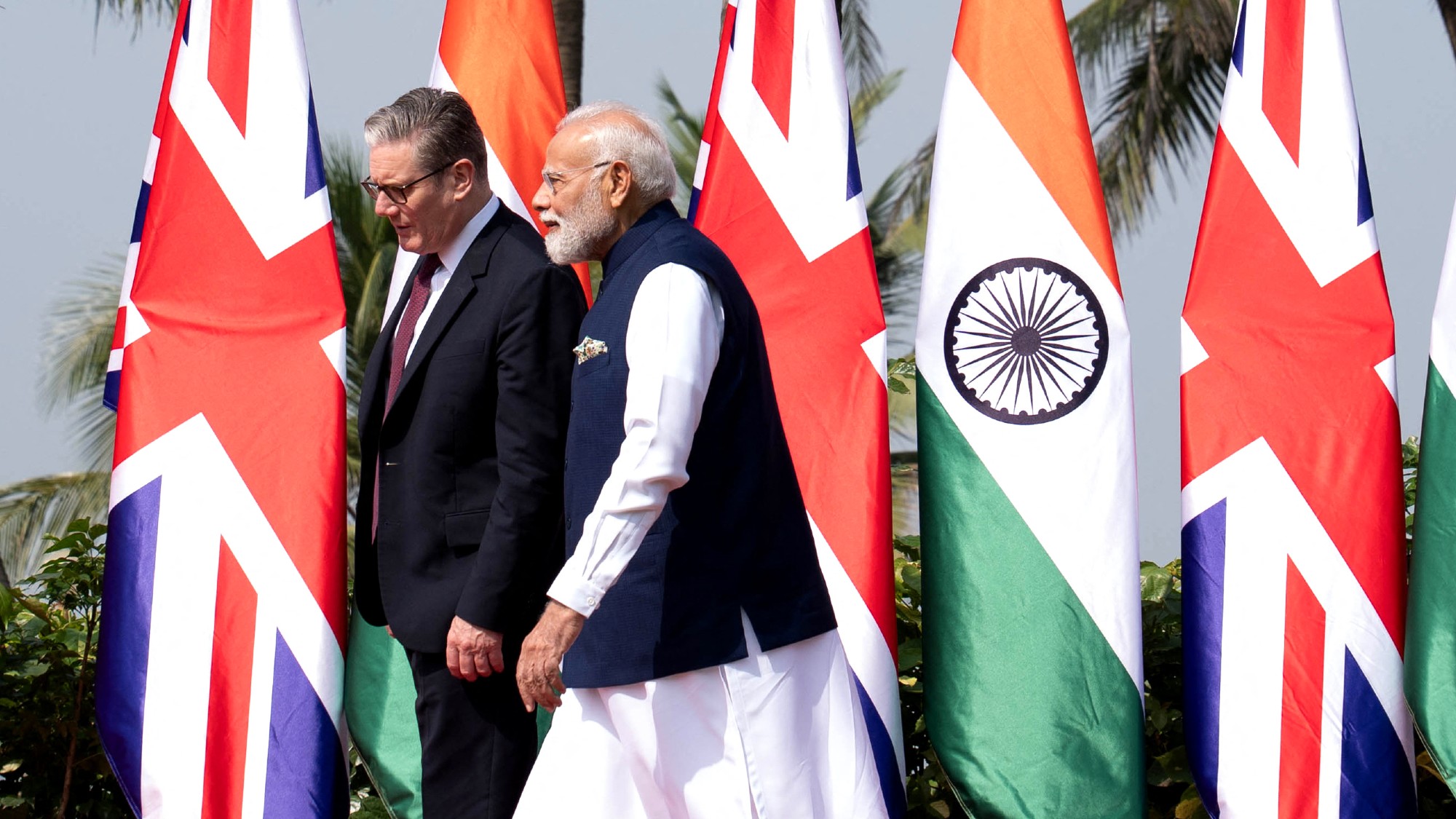China ‘bribing’ locals to move into disputed Indian border region
Building of villages replicates tactics used in South China Sea, experts warn

China is funding the construction of villages on Indian land amid rising tensions between the two nuclear superpowers over disputed border territory.
Tapir Gao, a member of parliament from India’s ruling Bharatiya Janata Party (BJP), told The Telegraph that “China has occupied our territory”. Beijing is behind the construction of “more than 100 houses”, he said, that have appeared on the banks of the River Tsari Chu in the Upper Subansiri district of Arunachal Pradesh.
The region is “remote with harsh weather conditions”, the paper said, “but the villages are said to include high-quality infrastructure such as roads, water, electricity and a communication network to entice new residents”.
The Week
Escape your echo chamber. Get the facts behind the news, plus analysis from multiple perspectives.

Sign up for The Week's Free Newsletters
From our morning news briefing to a weekly Good News Newsletter, get the best of The Week delivered directly to your inbox.
From our morning news briefing to a weekly Good News Newsletter, get the best of The Week delivered directly to your inbox.
Indian officials believe China is “constructing more than 600 such villages” along the Line of Actual Control (LAC), the paper added, a border between the two countries agreed after what Newsweek described as a “brief but bloody border war” in 1962.
Last year in June, at least 20 Indian and five Chinese soldiers were killed in hand-to-hand combat in the mountains in the first fatal clashes in at least 45 years.
Five months later a Beijing-based academic claimed Chinese troops had got around a no-live-shots agreement by using a microwave weapon that left Indian soldiers “vomiting” and unable to stand within 15 minutes.
According to the Vivekananda International Foundation, a think-tank headquartered in New Delhi, one villager in the newly constructed village was quoted in the Tibet Daily as saying that he received 30,000 Yuan (£3,500) a year to live in the border region.
A free daily email with the biggest news stories of the day – and the best features from TheWeek.com
The Telegraph described “similar views” being “echoed by several locals” who described “bribing” being deployed as an incentive to move.
Konchok Stanzin, a councillor in India’s Ladakh border region, said: “China lures locals by providing them with better-living facilities so that they come to live in the disputed border areas and create permanent settlements.”
The publication of an annual US Defence Department report has also “turned the spotlight on India’s concerns about a push by China to create civilian settlements” in the disputed region, Voice of America (VoA) said.
According to the document, titled Military and Security Developments Involving the People’s Republic of China (PRC), Beijing “continued taking incremental and tactical actions to press its claims at the LAC”.
“Sometime in 2020, the PRC built a large 100-home civilian village inside disputed territory between the PRC's Tibet Autonomous Region and India's Arunachal Pradesh state in the eastern sector of the LAC,” it added.
“These and other infrastructure development efforts along the India-China border have been a source of consternation in the Indian government and media.”
Brahma Chellaney, a New Delhi-based geostrategist, told The Telegraph that China’s actions were comparable with its efforts to expand into the South China Sea, explaining that “the village-building spree is designed with a purpose”.
“By creating civilian settlements in desolate, previously uninhabited border areas that are disputed or were forcibly occupied by it, China is seeking to assert its rights under international law,” he added. “In other words, it has undertaken unlawful action with the intent of legitimising its territorial claims.”
In response to the building, “both countries have beefed up military deployments all along the Himalayas”, VoA reported. “India says it is also focusing on improving infrastructure to meet the country's security requirements.”
In October, India “test-fired a nuclear-capable intercontinental ballistic missile with a range of 5,000km (3,125 miles) from an island off its east coast”, Al Jazeera said.
Coming “amid rising border tensions”, the broadcaster reported that the launch was accompanied by a government statement that said the test was consistent with “India’s policy to have credible minimum deterrence that underpins the commitment to no first use”.
-
 Political cartoons for December 7
Political cartoons for December 7Cartoons Sunday’s political cartoons include the Trump-tanic, AI Santa, and the search for a moderate Republican
-
 Trump’s poll collapse: can he stop the slide?
Trump’s poll collapse: can he stop the slide?Talking Point President who promised to ease cost-of-living has found that US economic woes can’t be solved ‘via executive fiat’
-
 Sudoku hard: December 7, 2025
Sudoku hard: December 7, 2025The daily hard sudoku puzzle from The Week
-
 Pakistan: Trump’s ‘favourite field marshal’ takes charge
Pakistan: Trump’s ‘favourite field marshal’ takes chargeIn the Spotlight Asim Munir’s control over all three branches of Pakistan’s military gives him ‘sweeping powers’ – and almost unlimited freedom to use them
-
 Femicide: Italy’s newest crime
Femicide: Italy’s newest crimeThe Explainer Landmark law to criminalise murder of a woman as an ‘act of hatred’ or ‘subjugation’ but critics say Italy is still deeply patriarchal
-
 Brazil’s Bolsonaro behind bars after appeals run out
Brazil’s Bolsonaro behind bars after appeals run outSpeed Read He will serve 27 years in prison
-
 Americans traveling abroad face renewed criticism in the Trump era
Americans traveling abroad face renewed criticism in the Trump eraThe Explainer Some of Trump’s behavior has Americans being questioned
-
 Nigeria confused by Trump invasion threat
Nigeria confused by Trump invasion threatSpeed Read Trump has claimed the country is persecuting Christians
-
 Sanae Takaichi: Japan’s Iron Lady set to be the country’s first woman prime minister
Sanae Takaichi: Japan’s Iron Lady set to be the country’s first woman prime ministerIn the Spotlight Takaichi is a member of Japan’s conservative, nationalist Liberal Democratic Party
-
 Will Starmer’s India visit herald blossoming new relations?
Will Starmer’s India visit herald blossoming new relations?Today's Big Question Despite a few ‘awkward undertones’, the prime minister’s trip shows signs of solidifying trade relations
-
 Russia is ‘helping China’ prepare for an invasion of Taiwan
Russia is ‘helping China’ prepare for an invasion of TaiwanIn the Spotlight Russia is reportedly allowing China access to military training